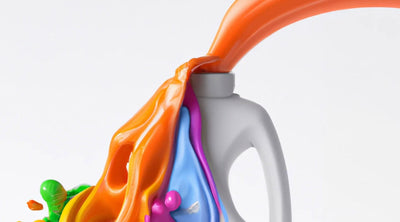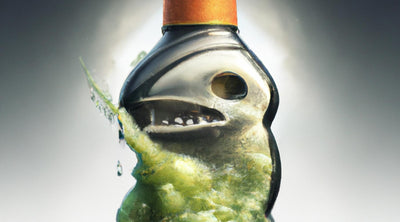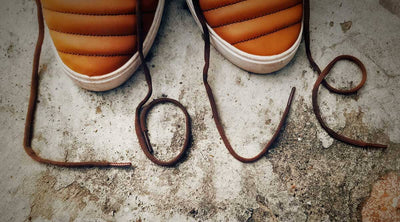How to Make Compost at Home
april 23, 2020
Composting Benefits
Compost Enhances Soil Structure And Texture
Having the ideal soil in your garden is rare. Generally, it’ll likely be too hard, sandy, heavy, or damp. Adding compost to your soil will improve its water-holding capability, fertility, and texture. As such, it can become lighter and fluffier, making it a much healthier home for your plants.
Compost Is Rich In Nutrients
Compost Encourages The Growth And Activity Of Beneficial Organisms
Larger organisms, such as earthworms, love tunneling through compost. This creates passageways that help water and air get to your plants’ roots.
Compost Is Extremely User Friendly
Commercial fertilizers need to be applied at specific times and in specific amounts. Conversely, you literally can’t go wrong with compost. It can be placed in your garden at any time, and you can’t add too much. Additionally, compost helps to balance soil pH levels and improve fertility. This makes it a much easier product to use in keeping your garden healthy.
Composting Helps Reduce Household Waste

Essential Ingredients For Composting
Browns
Greens
Water
What To Compost
Crucially, you’ll need to ensure that your compost pile has much more carbon than nitrogen. Generally speaking, you can do this by maintaining a ratio of one part green to two parts brown materials. The density of brown matter helps oxygen to gain access to the organisms living there. This keeps them nourished. Excess nitrogen prevents this from happening, slowing down the decomposition process.
Nitrogen rich matter tends to produce odors as it decomposes when exposed to open air. To avoid this, cover your greens with carbon-rich browns. These materials tend to produce a more pleasant and fresh smell, as they become compost.
What Not To Compost
- Meat, bones, or fish scraps, as they are likely to attract pests and rodents. That being said, there are composters available specifically for these materials.
- Perennial weeds or diseased plants. Composting them risks spreading disease or unwanted weed seeds throughout your garden.
- Pet manure. This should not be used in compost that is intended for food crops. It can spread dangerous parasites if not composted properly.
Certain fruit skins, such as banana peels and orange rinds. Often these have harmful pesticides on them.
Additionally, sawdust should only be added to your compost pile cautiously. It needs to be distributed very thinly, so that it doesn’t clump, and mustn’t contain any contaminants such as oil.
Compost Recipes
Recipe One
One part kitchen scraps
Three parts shredded leaves
Distribute the ingredients in three-inch layers up to three or four feet. Add water as needed.
Recipe Two
Three parts dry leaves and used paper products
One part vegetable waste and fruit scraps
Distribute the ingredients in three-inch layers up to three or four feet. Add water as needed.
Recipe Three
Two parts fresh grass cuttings
Two parts straw
One part healthy soil
Distribute ingredients in four-inch layers. Add water as needed.
Recipe Four
Two parts dead leaves
One part fresh grass cuttings
One part food leftovers
Distribute ingredients in four-inch layers. Add water as needed.
Composter Types: How To Choose A Composting Bin
If you have a substantial outdoor area then the larger bins might be the best option. This includes the no-turn bin and enclosed compost bin models.
Below, we explain the different outdoor options, before addressing indoor composting in the following section.
No-Turn Compost Bins
DIY Compost Bins
Basic Enclosed Compost Bins
Having a closed design like this is effective in keeping out pests. Basic enclosed compost bins are very affordable, but don’t allow for easy turning of the pile. This means that it can take a few months to produce quality compost.
Tumbler Compost Bins
Tumbler compost bins are much more efficient than the basic enclosed models. While similarly sealed, tumbler bins have mechanisms built in for turning the pile. This includes design features like interior paddles that move the pile around and let air into the pile. By aerating the internal contents, tumbler bins help to produce compost much faster.
Food Waste Digesters
Food waste digesters are designed specifically for this purpose. They use heat and high levels of microbial activity to affect rapid decomposition. There are many different models available, such as the green cone and hotbin.

Indoor Composting Methods
Aerobic Composting
Indoor aerobic bins have mechanisms (for example, air holes running along the side of the bin) to aid airflow, which facilitates the composting process.
Vermicomposting
How To Compost: Step-By-Step
Outside Composting
If your pile begins to look too wet, and starts to smell, then add more brown matter and aerate it. If it begins to look excessively dry and brown, add some water and green material.
It’s also important to ensure that your pile gets sufficient oxygen by stirring or turning it. How you approach this will depend on the composter you’re using – some will be designed to allow you to do this. This is best attempted when the center of the pile feels warm. Stirring the compost hastens the composting process and prevents odours from developing.
Once your pile cools down, becomes brown, and gains a dry and flaky consistency, it’s ready to be added to your garden. Add around five inches of compost to your garden beds before you start planting to get the best results.
Indoor Composting
For indoor composters, you’ll want to fill your bin to about three quarters full. Use one of the recipes outlined earlier. Thereafter, place a layer of garden soil on top.
For aerobic composting, bury your organic waste materials in the soil layer each day. If you’re vermicomposting, place one pound of worms in the soil for every 3.5 pounds of waste you produce, every week. This is because worms will eat around half their weight’s worth of material every day. So simply bury the waste in the soil layer with the worms.
Once your compost is dry, cool, and crumbly, it’s ready for use. Take it out of your composter, and sprinkle on your garden beds.
Now You Know How To Make Compost!
Get started on your first compost pile and be sure let us know how it goes.
MORE Sustainability 101 ARTICLES View all ›
Ready to make
the switch?
- Powerful Cleaning
- Dissolves Easily
- Skin-Friendly
- Eco-Friendly
- No Mess
















